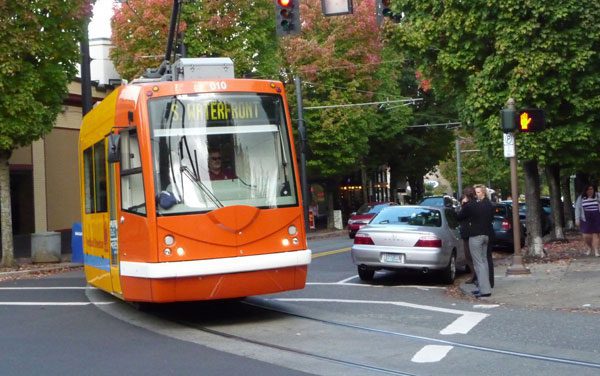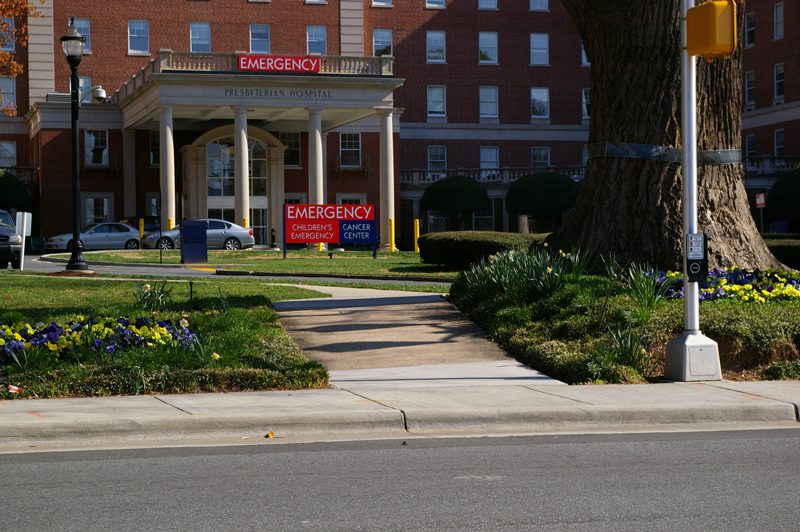Streetcar part of new, larger transit dilemma

The big picture may have gotten buried Tuesday as Charlotte City Council members chewed – and chewed and chewed – on different alternative revenue strategies that might enable the city to build the second leg of its proposed streetcar.
Most of the discussion was about finding ways to pay for the streetcar project that weren’t an uncomplicated (other than politically, of course), citywide property tax increase. But here’s the big picture, as articulated by City Manager Curt Walton: “The Blue Line Extension is likely to be the last project of its kind.”
The $1.1 billion BLE, which will run from uptown Charlotte to the UNC Charlotte campus, recently won its long-awaited federal funding for half its cost. Half of the rest of the cost will come from the state, and the other half will be paid with the countywide half-cent sales tax for transit.
Walton cautioned the council members not to expect Congress to continue to fund a public transit program that pays half the cost of building. As for the other proposed 2030 Transit Plan projects – the Red Line commuter rail, the Silver Line corridor to the southeast, the West corridor toward the airport, Walton said, “We’re not going to get those anytime soon. It’s going to take decades and decades and decades.”
| Links to more news on Tuesday Charlotte City Council meeting: |
The first streetcar leg – from Presbyterian Hospital to the Transportation Center on East Trade Street – is being built with a $25 million federal grant and $12 million in city funds. The $119 million second leg – from the Transportation Center to Johnson C. Smith University and from the hospital to Sunnyside Avenue near Central Avenue – was a piece of a $926 million, eight-year Capital Improvement Plan that did not win council support in June. The whole CIP would have required a 3.6-cent increase in the city property tax. Extracting only the streetcar would still have meant a capital plan requiring a 3-cent tax increase, Mayor Anthony Foxx said Tuesday. (The city’s property tax rate is 43.7 cents per $100 of property value.)
Meeting for the second in a series of budget-specific sessions, the council spent most of two hours talking about different revenue tools for the streetcar. Although the streetcar project (from Beatties Ford Road at Interstate 85 to the former Eastland Mall site) is a part of the Metropolitan Transit Commission’s 2030 Transit Plan, it’s far down the list of projects, and the transit sales tax isn’t bringing in enough revenue to let the MTC build any projects after the Blue Line Extension, due to start construction next year.
So the City Council decided in 2010 to move ahead on its own with the streetcar project, using only city money. But council members haven’t agreed how or whether to pay for the extension, and that lack of agreement, including some council members who don’t support the streetcar project, led to June’s vote against the whole Capital Improvement Plan.
TIFs, STIFs and SADs
Tuesday, most council members agreed to keep looking for tools such as Tax Increment Financing, Synthetic Tax Increment Financing, Special Assessment Districts and Municipal Service Districts to help with the streetcar funding. (To read more about what all those things are, click here to download the city staff’s presentation from Tuesday. Bonus: You’ll get a copy of a consultant’s economic analysis of the streetcar’s development potential from 2009.) All are essentially property taxes but would use the higher property tax revenues from the development the streetcar is expected to lure to the route. For instance, a Municipal Service District assesses a special property tax over a certain part of the city, to be used for specific purposes to improve that area. Examples are Charlotte Center City Partners and University City Partners.
In addition, council member Michael Barnes pressed to seek cooperation from some of the educational and nonprofit institutions along the streetcar route. He listed them: Presbyterian Hospital, Central Piedmont Community College, Charlotte Center City Partners, Johnson & Wales University and Johnson C. Smith University. Under several of the alternative finance strategies, those property owners are exempt from paying property taxes. So, Barnes said in essence, why not ask them to pony up a piece of the cost. He noted that UNC Charlotte had contributed $4 million in land and in-kind contributions to help the Blue Line Extension, and the university’s decision to allow the light rail to come onto campus was a key decision that allowed the project to qualify for federal funding.
A ‘PILOT’ project?
Other U.S. local governments have been eyeing a strategy known as Payment in Lieu of Taxes (PILOT), in which institutions exempt from property taxes make voluntary contributions to local government coffers. Here’s more on that from the Lincoln Institute of Land Policy, and a blog I wrote on it in 2010 for The Charlotte Observer. Both the Town of Davidson and the city of Durham are listed as having received Payment in Lieu of Taxes.
Unlike cities in some other states, Charlotte council members aren’t empowered to raise sales taxes or create a local income tax, or even create a parking space surcharge. Those moves must come from the N.C. General Assembly. In North Carolina, cities have little independent leeway beyond property taxes and some specific fees (water/sewer services and development-related fees) for raising revenue. (For more about the ways cities around the U.S. lack the ability to chart their own financial destinies, see this AtlanticCities.com piece, “To Fix Municipal Finances, States Need to Back Off.”)
Business license tax eyed
Some City Council members have asked city staff for more information about the possibility of using a Business Privilege License Tax (which N.C. cities can levy under certain conditions) that would apply to parking businesses, on a per-space basis. The city staff said its very rough estimate of what would be needed to raise $5 million a year via the BPL tax on parking spaces would cost roughly $110 per space per year. And it cautioned that the N.C. General Assembly has made noises about doing away with the Business Privilege License tax statewide.
My prediction: This will not be the last time you hear of all those tools – TIFs, MSDs, STIFs, SADs, BPLs, and so on – discussed as possible ways to pay for transit projects. As Walton warned, cities across America will have to look to urban-region taxpayers to fund their own transit projects. Whether that’s fair or wise national transportation policy is a question for another day. Regardless of the answers, it’s likely to be reality for the coming decades.
(Editor’s note: An earlier version of this article was posted Tuesday at the Naked City Blog, Transit? ‘It’s going to take decades and decades.’ )
The opinions in this article are those of the author and not necessarily those of the UNC Charlotte Urban Institute or the University of North Carolina at Charlotte.